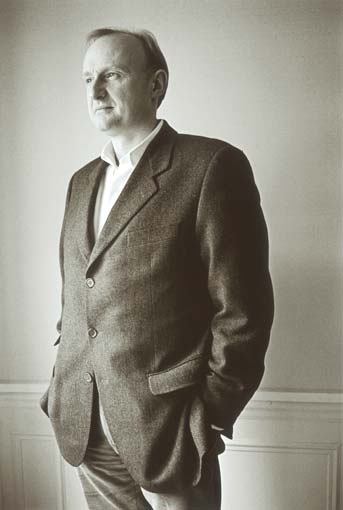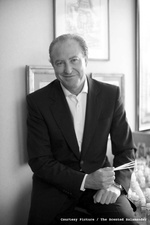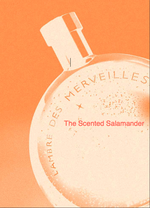10 Questions to Frédéric Malle Around the Launch of Portrait of a Lady by Editions de Parfums {Perfume Q & A}

In the Around-the-Launch-of Series...
Portrait of a Lady is the latest fragrance to be launched by French niche perfume house Editions de Parfums which was founded by Frédéric Malle in 2000. We asked the éditeur de parfums how the perfume composed by perfumer Dominique Ropion came about and what creative thought processes had gone into it. Malle's answers point consistently to the importance of thinking in terms of raw materials first and foremost while reminding us that a perfume is simply something that has to reach this state of grace - smelling good - and provoke an aesthetic emotion in us - to be beautiful. He also invites us indirectly to think about the genre of perfume-writing by making us realize better that it might very well be a genre much more independent from the original art form it purports to cover than one might expect it to be. Poetical licence may be the necessary ingredient to be added to the literary and critical renderings of fragrances, what Rousseau preferred to dub "imagination."
TSS - Did you read The Diary of a Man of Fifty by Henry James, the version one might consider as being the masculine version of The Portrait of a Lady, written a year before the latter yet much less well-known even from aficionados, or is it simply a coincidence? (the fact that the perfume Portrait of a Lady comes after Géranium pour Monsieur and is derived from it)
Frédéric Malle - My job is to work with perfumers on projects that they feel desire for. We take as a point of departure raw materials or other types of olfactory inspiration, but never literary concepts. This is why it is out of the question to create a series of perfumes around and inspired from the work of Henry James...

- What struck you most in the novel The Portrait of a Lady and the central character of Isabel Archer which justified for you the christening of the perfume with the title of the novel?
It is always at the end of an olfactory development, when the personality of a perfume asserts itself totally that its name comes to my mind.
I felt that the perfume by Dominique Ropion had an aristocratic elegance about it, therefore its name became obvious to me.
The affinity with the Henry James' character stops here.
Perfume is no intellectual object.
- Portrait of a Lady, the perfume, draws its inspiration from an aspect of Géranium pour Monsieur -- can an in-depth reworking of an accord in perfumery be considered as a creation?
It does not get inspiration from an aspect, it picks up again its accord, to be more precise.
To rework a similar theme in perfumery seems to me to be an act of creation, especially if the accord under consideration was created by the same author as for the one in the very beginning.
It is an act of creation in the same sense that it is one in painting when Rembrandt does hundreds of self-portraits, Cézanne - hundreds of Sainte-Victoire mountains, Monet - Nympheas, Picasso - cubist paintings, Andy Warhol - electric chairs...
- The rose in Portrait of a Lady, was it to make sure to transform a masculine into a feminine? Behind this gender-play on the masculine and feminine, what are the more shadowy areas, the gender-continuum line?
- We only wanted to make a beautiful perfume. It turned out that we found the result to be more feminine than masculine, hence its name.
I imagine that this type of question is for the marketing people; at any rate, I never ask myself this type of question.
- Portrait of a Lady offers a metallic facet: is it voluntary or is it a secondary effect and how did you collaborate on this aspect?
I think that you are referring to an aspect belonging to the rose essence. There is a huge amount of it in the formula.
It didn't bother us, this is why we did not attempt to erase it.
- Is there a figurative will expressed by the incense, smoky-veil aspect of Portrait of a Lady? One thinks about a feminine sartorial allusion...
No, we simply thought that this quality of incense made for a particularly harmonious marriage with the rose essence.
Once more, you have to understand that the name for us comes once the perfume is finished.
- The fragrance presents a dark quality and makes you think of the thickness of rose and oud perfumes. Is it for you a way of leaning towards an iconic accord of Oriental perfumery?
We do not think about the market when we work on a perfume. We simply try to make beautiful things.
- What are your favorite rose perfumes? What are in your opinion the most admirable compositions created around the rose if there is such a distinction existing between admiring and loving a perfume?
- Nahema when it came out seemed to me to be an extraordinary perfume. I have also much admired Paris by Yves Saint Laurent, Tea Rose, A Rose by Edouard Fléchier, Aromatics Elixir. I must be missing some.
- When did you know, working together with Dominique Ropion, that the perfume was finished?
When it started smelling good.
Before it was only a hope. An idea. An ideal we were getting closer to but which was off kilter.










I tried this perfume yesterday at the boutique in NYC - it didn't work for me at all.. and I was really disappointed in it after reading about it on a few blogs. It smells obvious - as if the woman in the portrait doesn't have great taste... Sorry Mr. Malle I am a devotee of several of your scents... but not this one...
I think it has a classic style which may not suit people who are looking for a more disruptive type of work. Its opulence and intensity though bring fresh vibrancy to the composition.